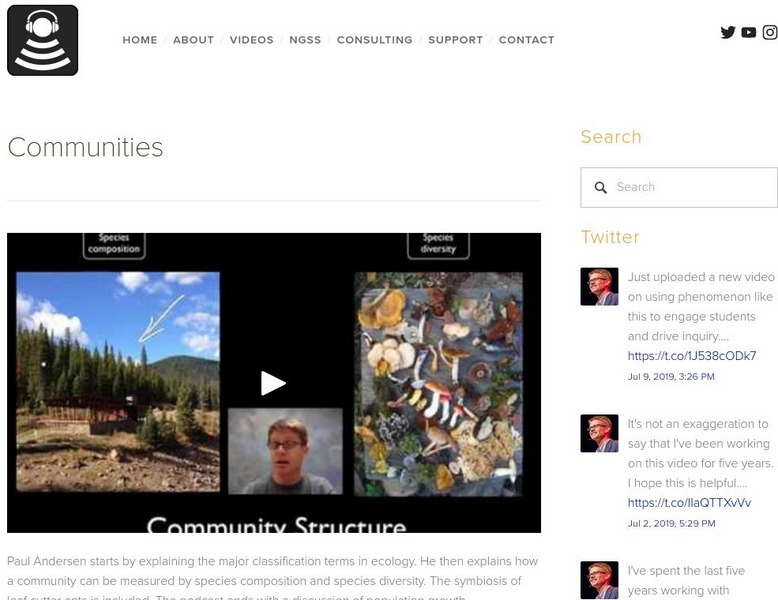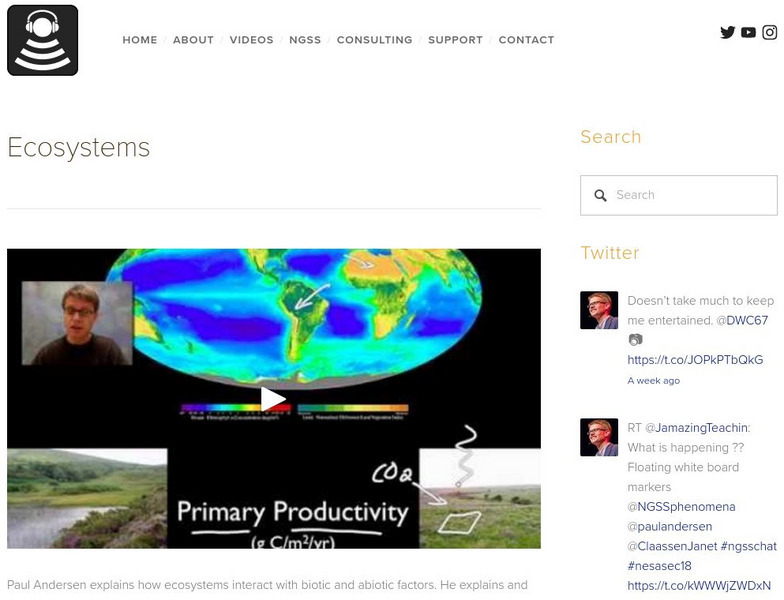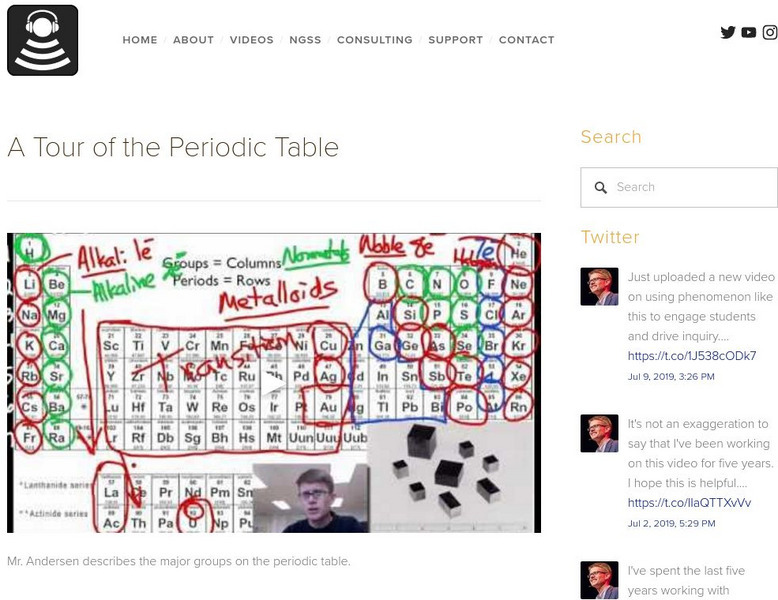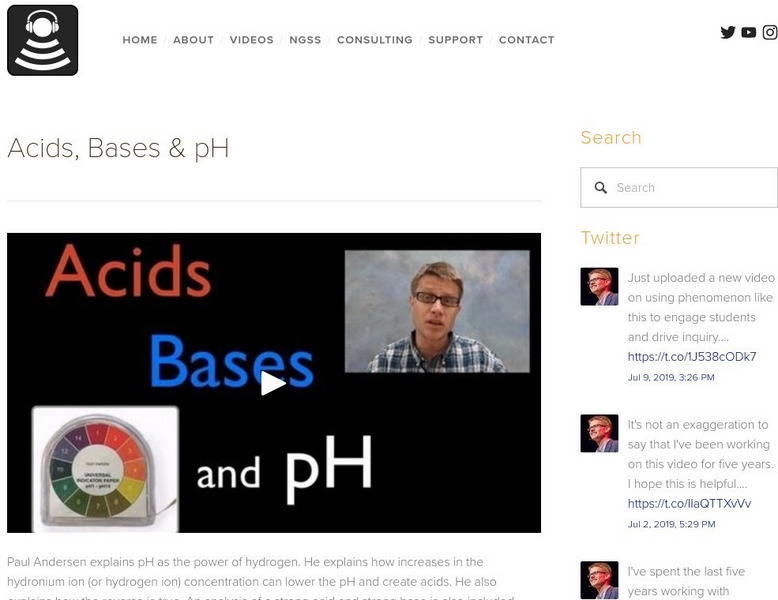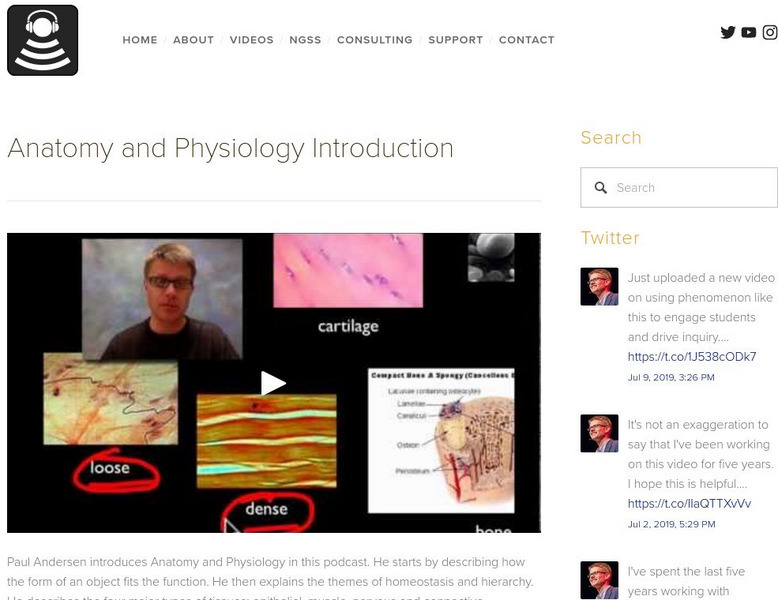Hi, what do you want to do?
Bozeman Science
Bozeman Science: Gene Regulation
Paul Andersen explains how genes are regulated in both prokaryotes and eukaryotes. He begins with a description of the lac and trp operon and how they are used by bacteria in both positive and negative response. He also explains the...
Bozeman Science
Bozeman Science: Signal Transmission and Gene Expression
Paul Andersen explains how signal transmission is used to alter both cellular function and gene expression. He uses the example of epinephrine release in humans and how it is used in the fight or flight response.
Bozeman Science
Bozeman Science: Genotypes and Phenotypes
Paul Andersen explains how changes in the genotype of an individual can affect the phenotype. He begins with genotype:phenotype::letters:story analogy. He explains how mutations can be neutral, beneficial or harmful. He also explains how...
Bozeman Science
Bozeman Science: Mechanisms That Increase Genetic Variation
Paul Andersen describes mechanisms that increase the genetic variation within a population. He begins by discussing how horizontal transfer can move genetic material between bacteria. Transformation, transduction, and conjugation in...
Bozeman Science
Bozeman Science: Viral Replication
Paul Andersen explains how viruses reproduce using the lytic cycle. He also shows how viruses can pick up new genetic material and how retroviruses (like HIV) can enter into the lytic cycle. He also describes the lysogenic cycle and how...
Bozeman Science
Bozeman Science: Evolutionary Significance of Cell Communication
Paul Andersen describes how cell communication is used in both single-celled and multicellular organisms. He starts by describing the symbiotic relationship between the bobtail squid and the bacteria Vibrio fisheri. He explains how...
Bozeman Science
Bozeman Science: Cell Communication
Paul Andersen discusses cell communication. He begins by explaining how he communicates with other individuals using various forms of electronic communication. He then explains how cells communicate when the distance between them is big,...
Bozeman Science
Bozeman Science: Signal Transduction Pathways
Paul Andersen explains how signal transduction pathways are used by cells to convert chemical messages to cellular action. Epinephrine is used as a sample messenger to trigger the release of glucose from cells in the liver. The...
Bozeman Science
Bozeman Science: Effects of Changes in Pathways
Paul Andersen explains how changes in the signal transduction pathway can affect organisms. He begins with a brief discussion of the tetrodotoxin produced by the California Newt. He then explains how anthrax affects adenylate cyclase and...
Bozeman Science
Bozeman Science: Cellular Organelles
Paul Andersen describes the structure and function of the major organelles in a eukaryotic cell. The endoplasmic reticulum, ribosomes, and golgi complex produce and store proteins in the cell. Lysosomes dissolve broken and invasive...
Bozeman Science
Bozeman Science: Cellular Specialization
Paul Andersen explains how cells differentiate to become tissue specific. He also explains the role of transcription factors in gene regulation. The location of a cell within the blastula ultimately determines its fate. The SrY gene is...
Bozeman Science
Bozeman Science: Organ Systems
Paul Andersen explains how organs work together to form organ systems and how organ systems work together to form organisms. The kidney and bladder work together to filter blood in the excretory system. The circulatory and respiratory...
Bozeman Science
Bozeman Science: Communities
Paul Andersen starts by explaining the major classification terms in ecology. He then explains how a community can be measured by species composition and species diversity. The symbiosis of leaf cutter ants is included. The podcast ends...
Bozeman Science
Bozeman Science: Ecosystems
Paul Andersen explains how ecosystems interact with biotic and abiotic factors. He explains and gives examples of food chains and food webs. He shows how limiting factors eventually leads to logistic growth. Real data from Yellowstone...
Bozeman Science
Bozeman Science: Enyzmes
Paul Andersen explains how enzymes are used to break down substrates. The correct shape of the active site allows a key/lock fit between the enzyme and the substrate. The enzyme catalase is used to break down hydrogen peroxide. The...
Bozeman Science
Bozeman Science: Cooperative Interactions
Paul Andersen emphasizes the importance of cooperation in living systems. He starts with a brief description of game theory and why countries at peace do better over the long term. He then explains how microscopic cells cooperate in the...
Bozeman Science
Bozeman Science: Populations
Paul Andersen explains how populations interact in an ecosystem. The symbiosis of several populations is based on effects that may be neutral, positive, or negative. Interactions like mutualism, commensalism and parasitism are included....
Bozeman Science
Bozeman Science: Cellular Variation
Paul Andersen explains how variation is created within a cell. He starts by showing how molecular variation can increase fitness at the local level. He explains how an additional chlorophyll molecule allows plants to absorb more light...
Bozeman Science
Bozeman Science: Genotype Expression
Paul Andersen explains how genotypes can be expressed or not based on changes in the environment. He starts with a brief description of the Himalayan rabbit and how melanin production can be disrupted by high temperature. He explains how...
Bozeman Science
Bozeman Science: A Tour of the Cell
Paul Andersen takes you on a tour of the cell. He starts by explaining the difference between prokaryotic and eukaryotic cells. He also explains why cells are small but not infinitely small. He also explains how the organelles work...
Bozeman Science
Bozeman Science: A Tour of the Periodic Table
Mr. Andersen describes the major groups on the periodic table.
Bozeman Science
Bozeman Science: Acids, Bases & P H
Paul Andersen explains pH as the power of hydrogen. He explains how increases in the hydronium ion (or hydrogen ion) concentration can lower the pH and create acids. He also explains how the reverse is true. An analysis of a strong acid...
Bozeman Science
Bozeman Science: Analyzing & Interpreting Data
Paul Andersen explains how scientists analyze and interpret data. Data can be organized in a table and displayed using a graph. Students should learn how to present and evaluate data. [7:23]
Bozeman Science
Bozeman Science: Anatomy and Physiology Introduction
Paul Andersen introduces Anatomy and Physiology in this podcast. He starts by describing how the form of an object fits the function. He then explains the themes of homeostasis and hierarchy. He describes the four major types of tissues;...

















